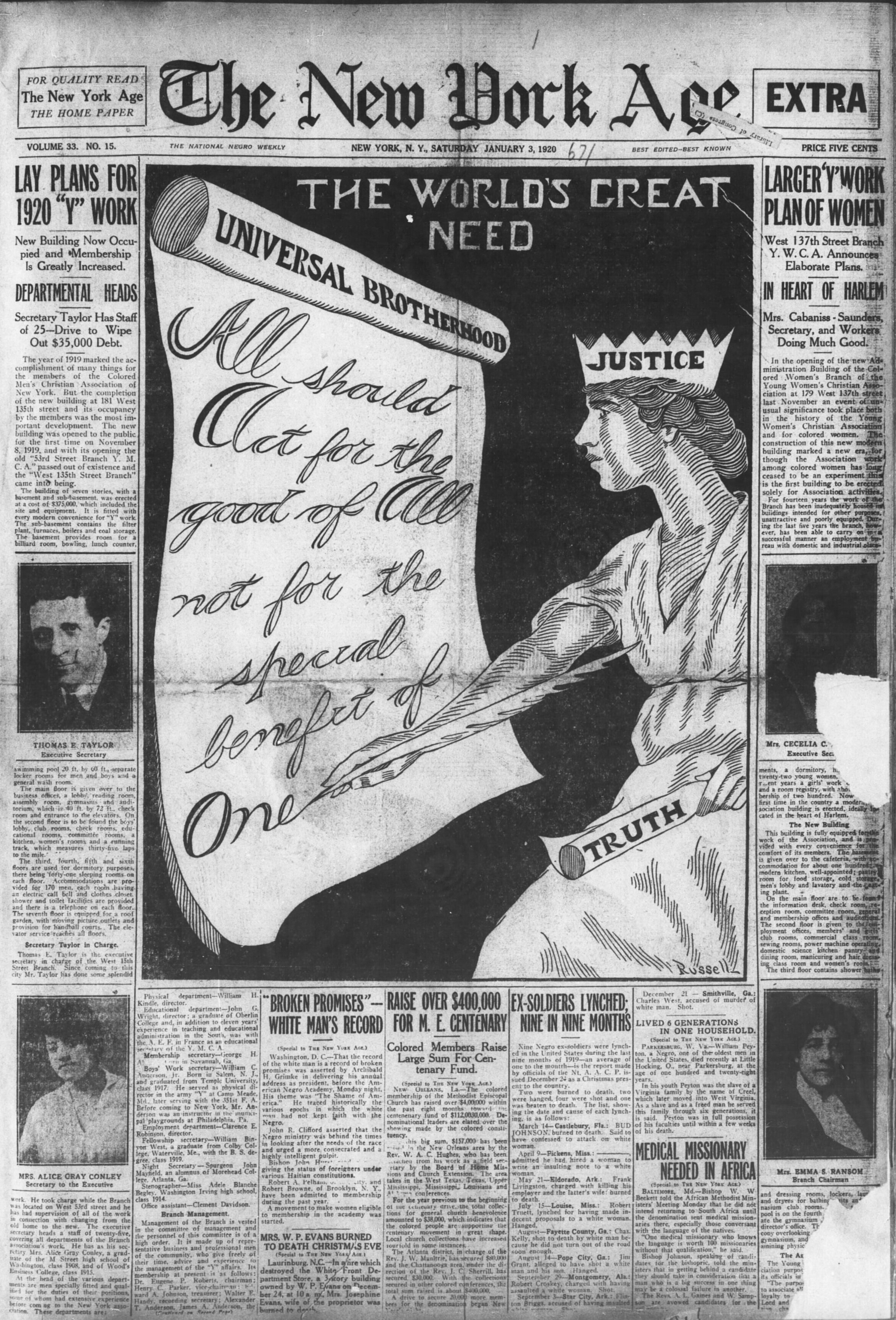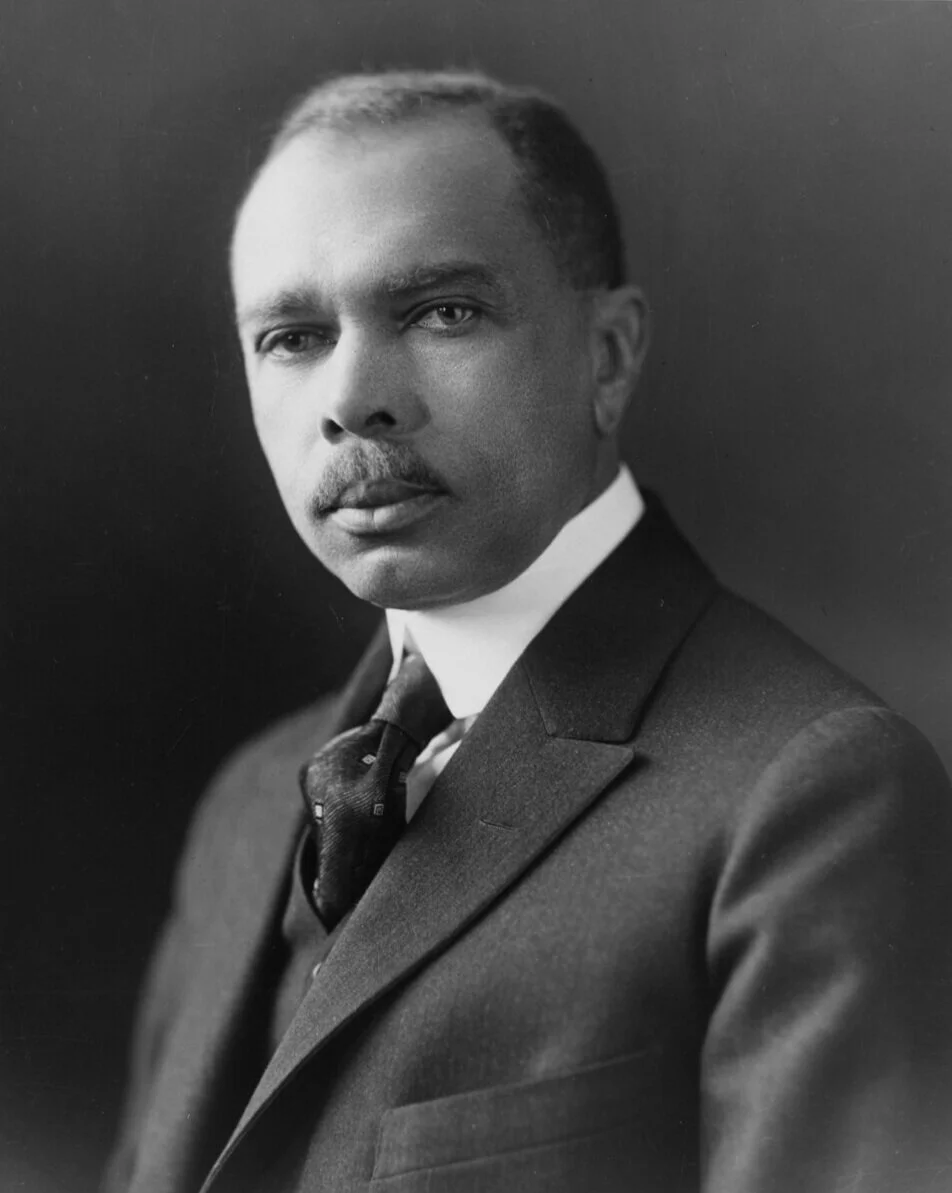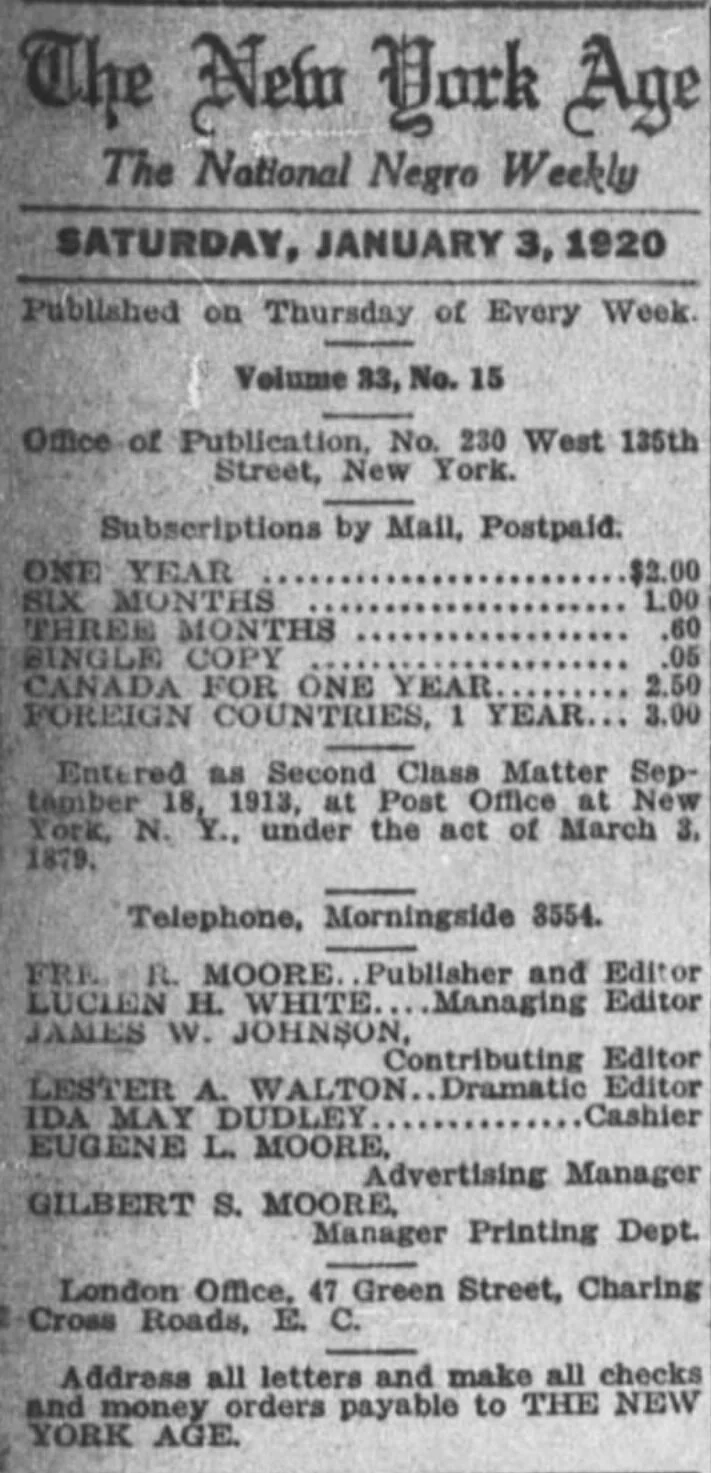The New York Age and the harlem Renaissance
The New York Age, published out of its Harlem offices at 230 West 135th Street, was one of two weekly newspapers serving the African American community of New York City. (The other, The New Amsterdam News, continues to this day, but there is no archive of it for 1920—a sign of the lack of institutional interest in African American culture.) Here is its first appearance in 1920:
Library of Congress
The Age billed itself as both “The Home Paper,” and “The National Negro Weekly”; it balanced local news (and arts, and sports coverage) with wider concerns of African American life in the US, and a bent for for social justice. On January 3, 1920, the newspaper’s hopes for a more just world was expressed in the illustration by editorial cartoonist “Russell” (who contributed regularly and never used his full name). The front page’s local focus was recently opened Harlem branches of the YMCA at 181 West 135th Street and 179 West 137th Street—called, respectively, the Colored Men’s Christian Association of New York, and the Young Women’s Christian Association. (The Harlem YMCA was established on the other side of 135th Street in 1931; the previous location is now owned by the nearby Abyssinian Baptist Church.)
The Age was the particular organ for writer and civil rights activist James Weldon Johnson, who would have a momentous 1920, becoming the first African American to be named executive secretary of the National Association for the Advancement of Colored People (NAACP). Johnson helped make the newspaper a key text in the early years of the Harlem Renaissance.
James Weldon Johnson ca. 1920. Photo by Addison Scurlock, courtesy of the Smithsonian Institution, National Museum of American History.
The New York Age, masthead, 3 Jan. 1920. Courtesy Library of Congress.
For his first editorial column of 1920, Johnson decided to reprint his essay published five years earlier, about what he called “the Harlem Gold Mine.” Johnson had been foresighted enough in late 1914 to recognize Harlem as “the most unique Negro settlement in the world,” and outraged enough to point out that “Every nationality is making money off the Negroes in Harlem—except Negroes.” He was astute enough in early 1920 to recognize that the message bore repeating. “Reading ‘The Harlem Gold Mine’ to-day, it sounds a bit like prophecy,” he writes. It was “so timely then,” and “is not untimely to-day.”



